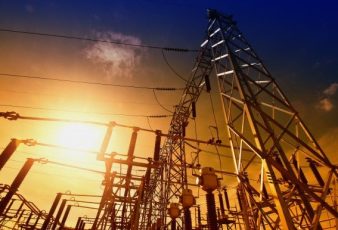Solenoid valves are essential components in various fluid control systems, playing a crucial role in controlling the flow of liquids or gasses. These electromechanical devices are designed to open, close, or control the flow of fluid through pipelines using an electromagnetic solenoid. There are various types of solenoid valves available, each designed to cater to specific applications and requirements. This article will discuss the different types of solenoid valves, how they work, and factors to consider when selecting a solenoid valve for your application.
The Basic Operating Principle Of Solenoid Valves
To understand how solenoid valves work, one must first know what a solenoid is. A solenoid is a coil of wire that generates a magnetic field when an electric current passes through it. The magnetic field created by the solenoid is utilized to control the operation of the valve.
Solenoid valves have two primary positions – open and closed. When electrical power is applied to the solenoid coil, the magnetic field pulls a plunger, which in turn opens or closes the valve. When the electrical power is removed, a spring returns the plunger to its original position, allowing the valve to return to its default position. The Blue-White® CO2 Feed System is one of the examples that has solenoid valves.
Direct-Acting Solenoid Valves
Direct-acting solenoid valves are the simplest and most common type of solenoid valves. They feature a basic design where the solenoid directly controls the movement of the valve’s plunger. When the solenoid is energized, the magnetic force produced directly lifts the plunger, allowing fluid to flow through the valve.
These valves are highly reliable and fast-acting, making them suitable for applications with low-pressure requirements, such as medical equipment, air compressors, and automotive systems. In medical equipment, direct-acting solenoid valves are often used to control the flow of oxygen or other medical gasses. In air compressors, they help regulate the air supply by controlling the on/off mechanism, while in automotive systems, they can control hydraulic pressure for braking systems or transmission fluid flow.
Indirect-Acting Solenoid Valves
Indirect-acting solenoid valves, also known as pilot-operated solenoid valves, rely on the pressure difference between the inlet and outlet ports to control the movement of the valve’s plunger. When the solenoid is not energized, the pressure difference maintains the plunger in its closed position. When the solenoid is energized, the pressure difference is relieved, allowing the plunger to lift and the valve to open.
These valves are designed for applications with high pressure or flow requirements, such as water treatment systems, industrial processes, and heating, ventilation, and air conditioning (HVAC) applications. In water treatment systems, indirect-acting solenoid valves can control the flow of water through filtration and disinfection processes. In industrial processes, they help manage the flow of various fluids in process lines, and in HVAC systems, they assist in maintaining proper temperature and pressure within the system.
Semi-Direct (Differential) Solenoid Valves
Semi-direct solenoid valves, also known as differential solenoid valves, combine the principles of both direct-acting and indirect-acting solenoid valves. In these valves, the solenoid partially controls the movement of the valve’s plunger, while the remaining control is provided by the pressure difference between the inlet and outlet ports.
Semi-direct solenoid valves are suitable for applications with medium pressure and flow requirements. They are commonly used in irrigation systems, chemical processing plants, and food and beverage industries. In irrigation systems, they help control the water flow to different zones, ensuring efficient water distribution. In chemical processing plants, they manage the flow of various chemicals between different stages of the production process, while in food and beverage industries, they ensure safe and hygienic control of fluids during production and packaging.
Factors To Consider When Selecting A Solenoid Valve
Selecting the appropriate solenoid valve for your application is essential to ensure proper performance and reliability. Some factors to consider when selecting a solenoid valve include:
- Valve’s Function – Determine whether you need a valve to control fluid flow in one direction, to stop the flow, or to regulate flow.
- Type of Fluid Being Controlled – The fluid’s properties, such as viscosity, temperature, and chemical compatibility, can impact the valve’s performance and material choice.
- Pressure Conditions – Choose a valve that can withstand the expected pressure conditions in your application.
- Material Compatibility – Select materials that are compatible with the fluid being controlled to prevent corrosion and potential leakage.
- Environmental Factors – Consider factors such as ambient temperature, humidity, and external pressure when selecting a valve to ensure proper operation and longevity.
Common Issues And Maintenance Tips For Solenoid Valves
Solenoid valves, like any other mechanical device, can experience issues and require maintenance to ensure optimal performance. Some common issues include coil failure, dirt or debris buildup, and leakage. Regular inspection and maintenance can help prevent these issues and prolong the life of your solenoid valve.
To maintain your solenoid valve, ensure that the coil is clean and free from debris, check for any signs of wear or damage on the plunger and seals, and ensure that the valve body is free from
dirt and contaminants. Additionally, consider the manufacturer’s recommendations for maintenance schedules and practices to ensure reliable operation.
Conclusion
Understanding the different types of solenoid valves, how they work, and factors to consider when selecting a valve is crucial for choosing the right valve for your application. By selecting the appropriate solenoid valve type, you can ensure optimal performance, reliability, and longevity of your fluid control system. It is also essential to consult with experts and conduct further research to ensure the proper selection, installation, and operation of solenoid valves in your specific application.
Read Also:




























